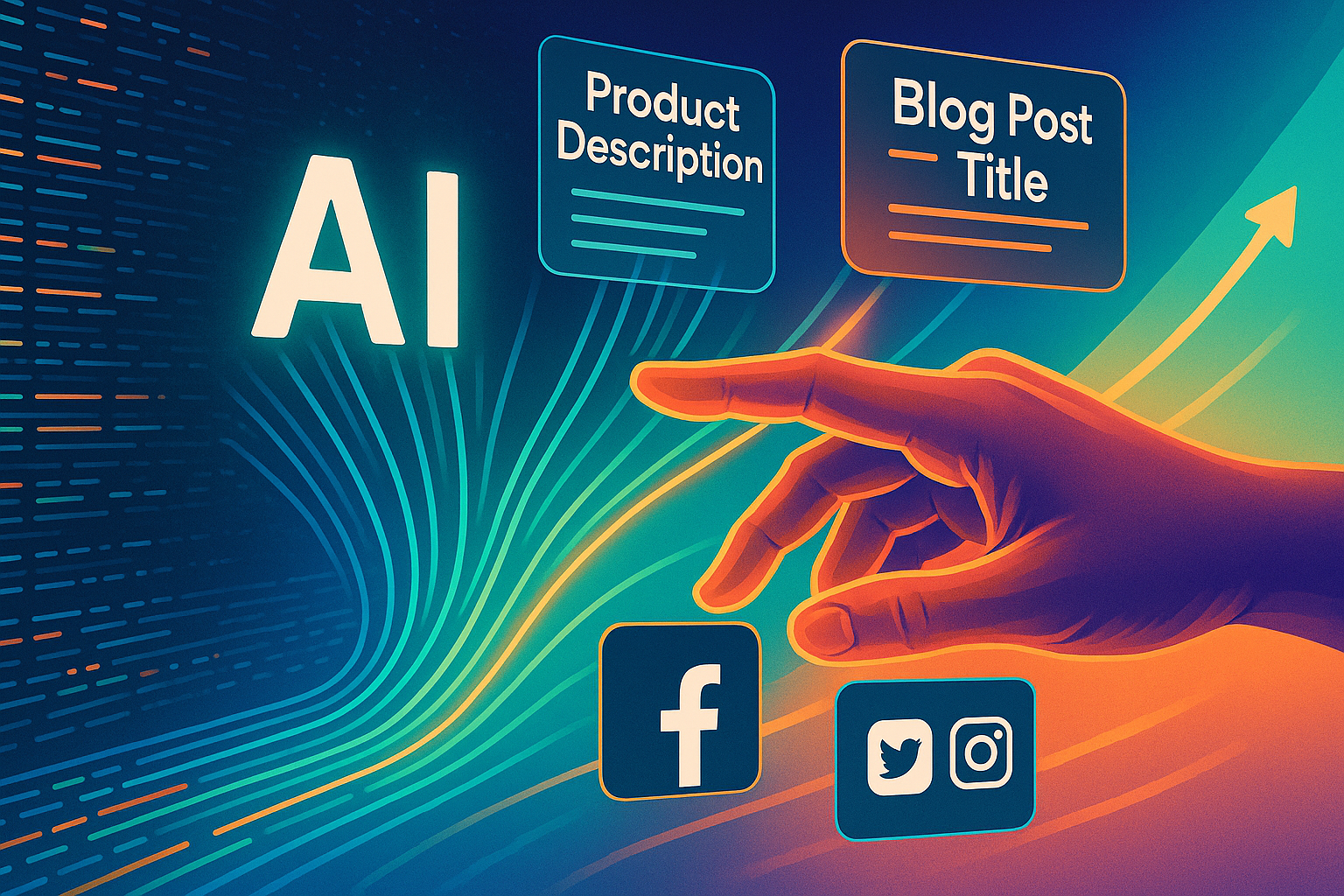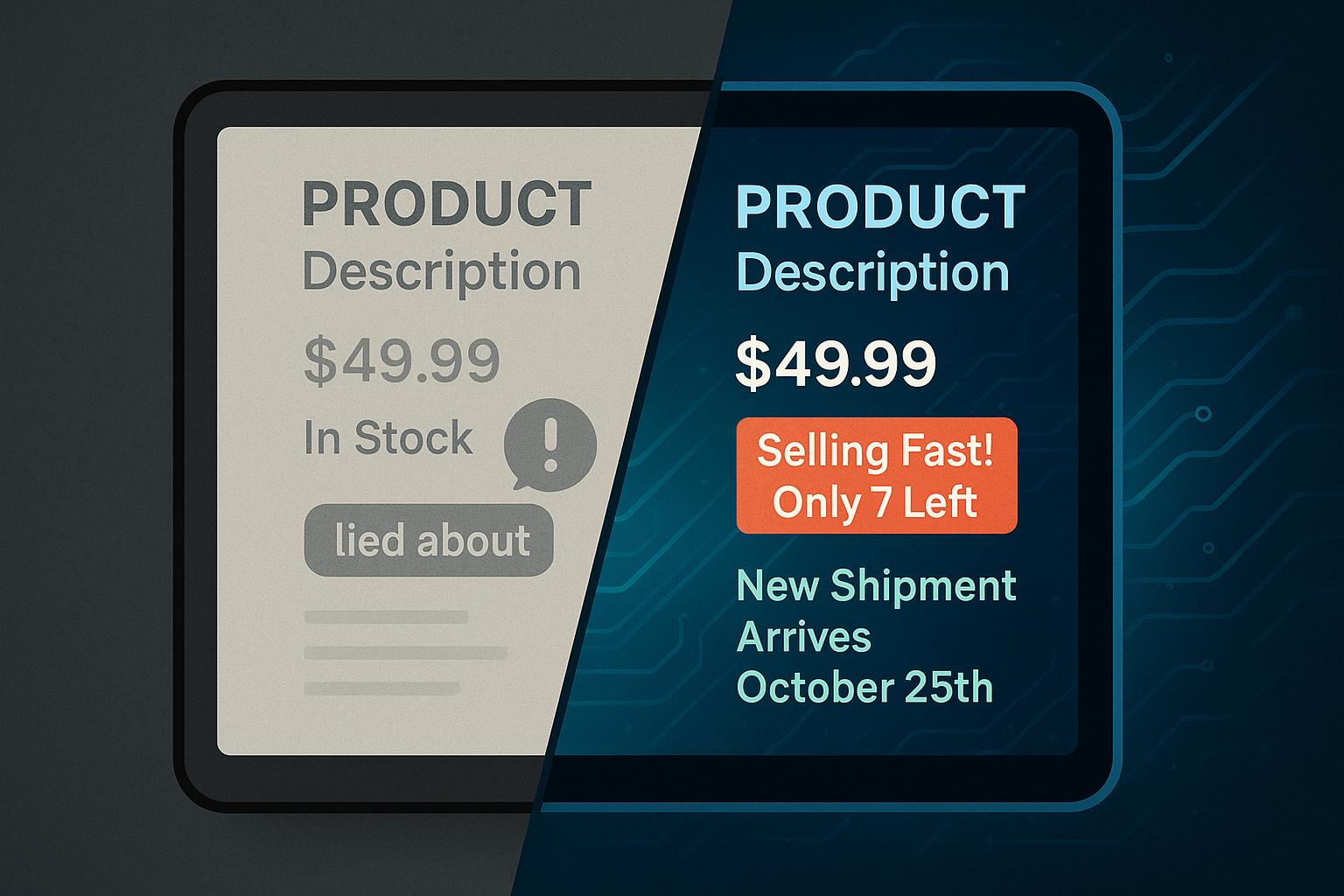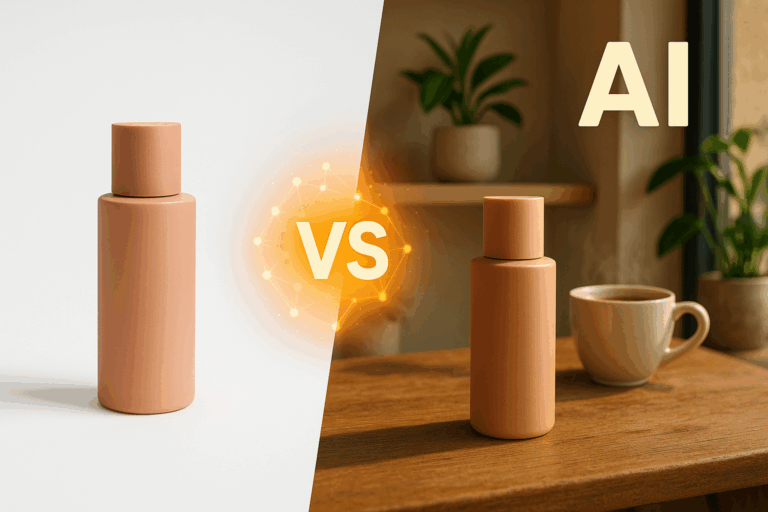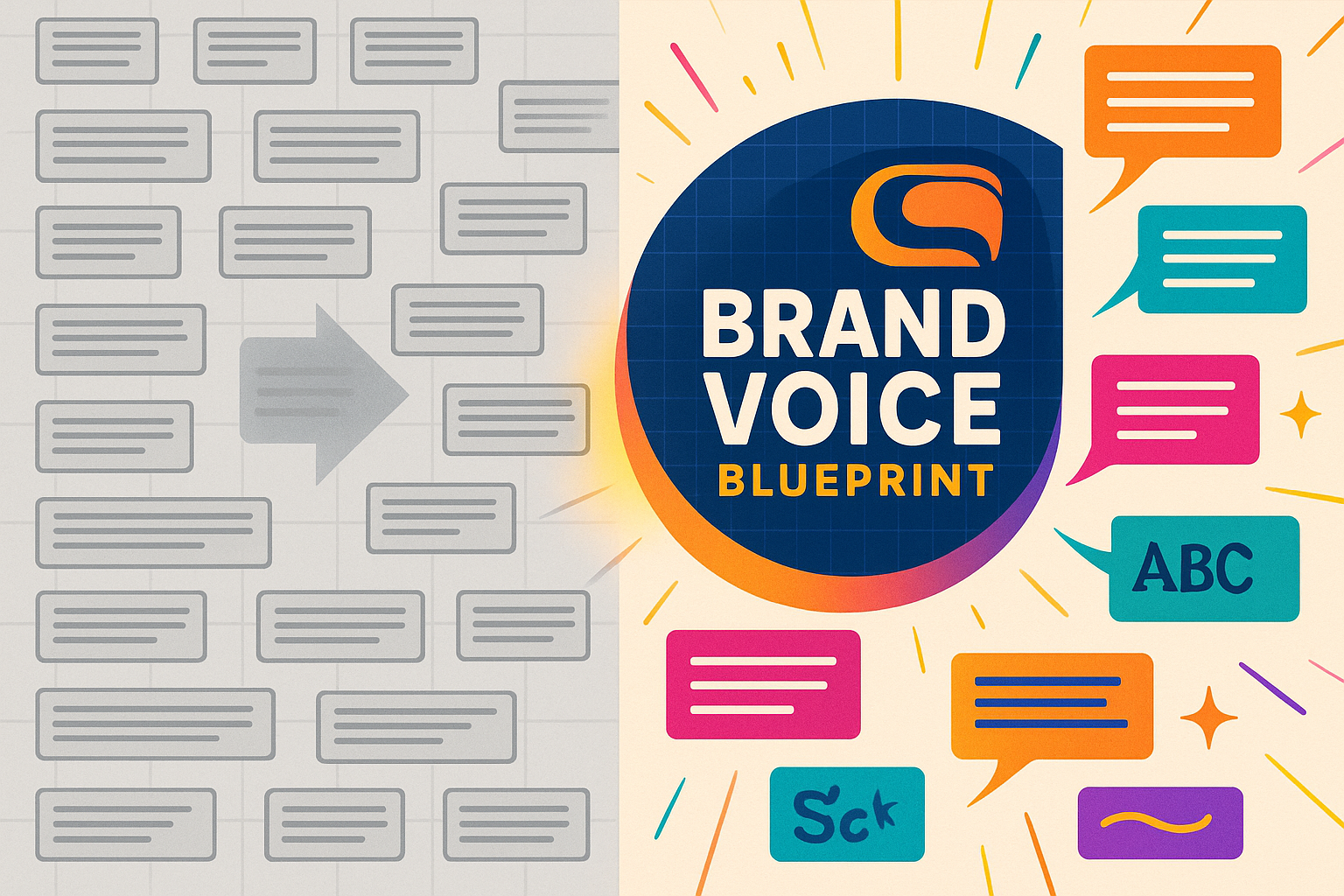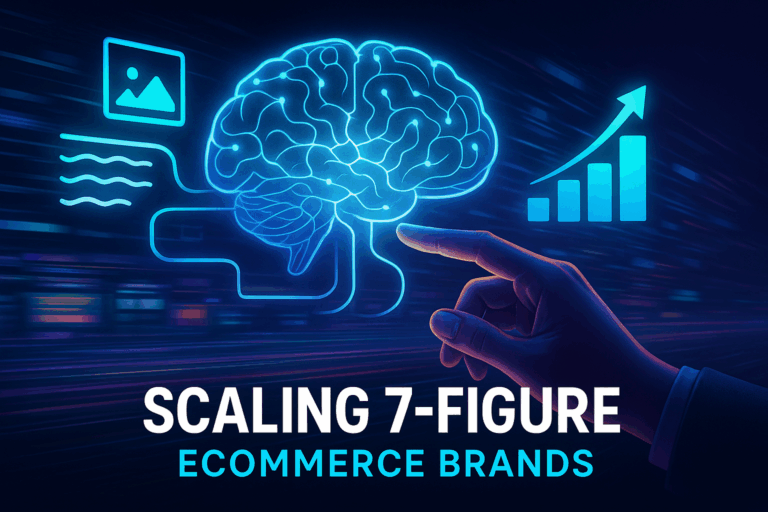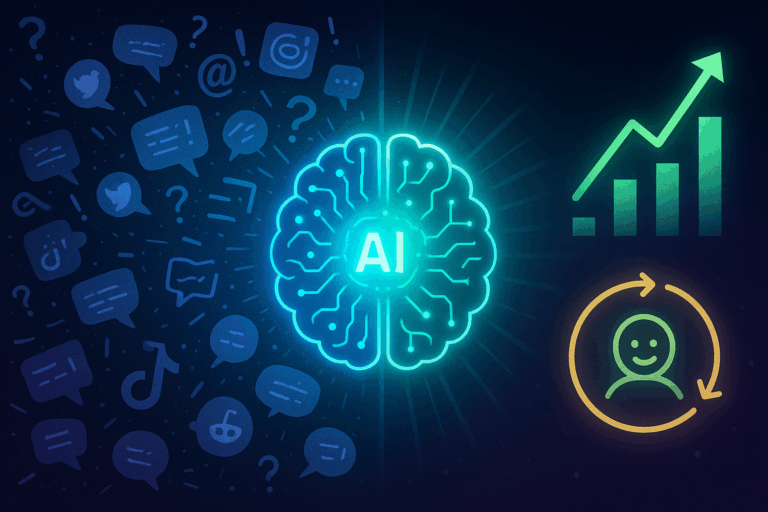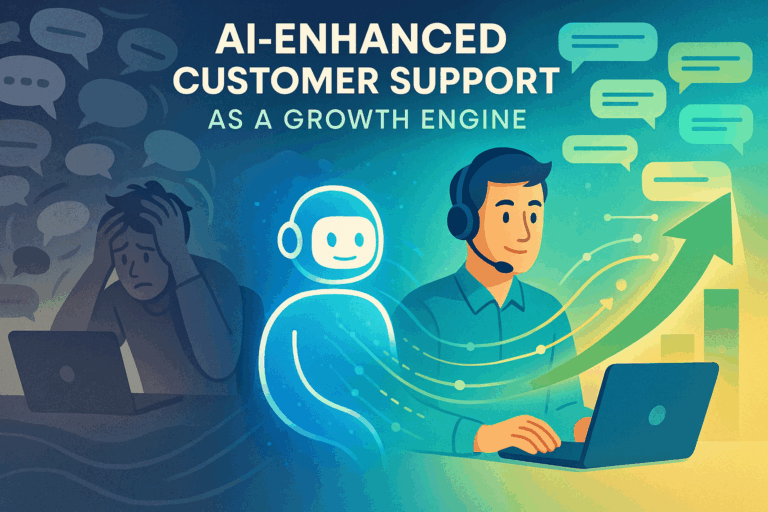You have 5,000 products. Each one needs a unique, compelling, SEO-friendly description. Plus, you need weekly blog posts, daily social media updates, and a new ad campaign for the upcoming holiday.
Your content team is two people.
If that scenario feels painfully familiar, you’re not alone. For growing ecommerce brands, the demand for high-quality content is a relentless treadmill. It’s the engine of your SEO, the voice of your brand, and the catalyst for conversions. But creating it at the scale and speed the market demands often feels impossible.
Until now. Artificial intelligence isn’t just a buzzword from a tech conference; it’s the co-pilot your marketing team has been waiting for. It’s here to transform that content treadmill into a launchpad for growth.
What is AI-Powered Content Creation, Really?
Let’s cut through the jargon. At its core, AI-powered content creation uses smart algorithms (like Generative AI and Natural Language Processing) to help you research, draft, and optimize text and visuals. Think of it less like a robot taking over and more like an incredibly fast, data-savvy assistant who can:
- Write like a human: Understand context, tone, and nuance to generate everything from witty ad copy to in-depth technical descriptions.
- Process vast data: Analyze top-ranking articles, competitor language, and customer reviews in seconds to inform your content strategy.
- Personalize at scale: Create dozens of variations of an email or product description to speak directly to different customer segments. Research shows that 76% of consumers are more likely to buy from brands that personalize, and AI makes that level of tailoring achievable.
For an ecommerce brand, this isn’t just about efficiency. It’s about gaining a powerful competitive edge.
From Product Pages to Ad Campaigns: Core AI Use Cases in Ecommerce
AI isn’t a single tool; it’s a toolkit. Here’s how successful brands are using it to solve their biggest content challenges.
Compelling Product Descriptions at Scale
Manually writing thousands of unique product descriptions is a soul-crushing task that often gets pushed to the bottom of the list. AI can take your raw product data—specs, features, materials—and instantly generate engaging, benefit-driven descriptions that are optimized for search engines and LLMs.
You can either do this manually, or use a product feed optimization tool with AI built-in, like Feedzly.
- Before AI: “Blue T-Shirt. 100% cotton. Sizes S-XL.”
- After AI: “Experience all-day comfort with our classic crew neck tee. Crafted from ultra-soft, 100% premium cotton, this versatile blue shirt is designed for a perfect fit, wash after wash. The ideal staple for your year-round wardrobe.”
SEO Blog Posts That Actually Rank
Topical authority is crucial for ranking on Google. But consistently publishing expert-level content takes immense time. AI can act as a research and drafting partner, helping you:
- Ideate topics based on keyword trends and customer questions.
- Create detailed outlines structured for SEO success.
- Draft initial versions of articles, pulling in relevant data and sources.
This frees up your human experts to focus on adding unique insights, brand stories, and strategic direction—the elements that build true thought leadership.
High-Converting Ad & Email Copy
Which headline will perform better? Which call-to-action will drive more clicks? AI eliminates the guesswork by generating dozens of variations of ad copy, social media posts, and email subject lines in seconds. You can A/B test more effectively, learn faster, and significantly improve your campaign ROI.
Stunning Visuals Without a Photoshoot
Need a lifestyle shot of your product being used on a beach in Italy? Or a creative concept for your next social media ad? AI image generation can create high-quality, original visuals from a simple text description. This dramatically cuts down on the cost and logistical headaches of traditional photoshoots, allowing you to create a wider variety of visual content to keep your brand fresh and engaging.
Winning Locally: GEO-Specific Content
Expanding into new regions means adapting your content to local languages, cultural nuances, and search behaviors. AI can help you translate and localize your website copy, ads, and product information at scale, ensuring your brand message resonates with customers no matter where they are.
The Human-AI Partnership: Your Secret to Authentic Content
Here’s the most important takeaway: AI is a co-pilot, not an autopilot. Relying on it to do 100% of the work is a recipe for generic, soulless content that sounds like everyone else. The real magic happens when human creativity guides AI’s efficiency.
This is where many brands go wrong. They press “generate” and “publish.” Winning brands press “generate,” “refine,” “infuse,” and then “publish.”
The Art of the Prompt: A Mini-Masterclass
The quality of your AI output depends entirely on the quality of your input. A prompt is your creative brief to the AI.
- A Bad Prompt: “Write a product description for a coffee mug.”
- Result: Generic, boring copy that could describe any mug on the planet.
- A Great Prompt: “Write a 150-word product description for our ‘Sunrise’ ceramic coffee mug. Our brand voice is warm, inspiring, and a little playful. The target audience is busy professionals who cherish their morning coffee ritual. Highlight that the mug is handcrafted, dishwasher-safe, and has an ergonomic handle. Include the keywords ‘artisan coffee mug’ and ‘morning ritual’.”
- Result: A rich, brand-aligned description that speaks directly to the customer and is optimized for search.
The Essential Human Review Loop
Your team’s expertise is your greatest asset. AI-generated content should always pass through a human review to:
- Fact-check for accuracy.
- Inject brand voice and unique storytelling.
- Ensure emotional resonance and strategic alignment.
AI handles the 80% of heavy lifting, freeing your team to focus on the critical 20% that makes your brand unforgettable.
Choosing Your Co-Pilot: From General Tools to Specialized Agents
The market is flooded with AI content tools, from general-purpose writers to visual generators. While these are a great starting point, the real competitive advantage comes from solutions built specifically for the complexities of ecommerce.
General tools are like a Swiss Army knife—useful for many things, but not a master of any. For a high-growth ecommerce brand, you eventually need a specialist’s tool. This is where the next evolution of AI comes in: specialized agents.
Unlike generic platforms, advanced ai agents for ecommerce are custom-trained systems designed to execute complex, multi-step marketing strategies. For example, a generic AI can write a blog post. A specialized SEO AI agent for ecommerce can:
- Analyze your entire product catalog and search performance data.
- Identify content gaps and keyword opportunities.
- Develop a full content strategy to build topical authority.
- Create and optimize thousands of product descriptions, category pages, and blog posts that are not only well-written but also strategically interlinked to boost your rankings.
- Adapt content for Generative Engine Optimization (GEO), ensuring you’re visible in AI-powered search results like Google’s AI Overviews.
This is the difference between simply creating content and deploying an intelligent content strategy that drives measurable traffic and revenue.
Your AI Content Questions, Answered
Navigating this new landscape brings up a lot of questions. Here are some of the most common ones we hear.
Will AI replace my content team?
No. AI will amplify your content team. It automates repetitive tasks, allowing your writers, strategists, and creatives to focus on higher-value work like strategy, brand storytelling, and customer connection. Teams that adopt AI will outperform those that don’t.
Is AI-generated content bad for SEO?
Google’s stance is clear: they reward high-quality, helpful content, regardless of how it’s created. Low-quality, spammy content—whether written by a human or an AI—will be penalized. The key is to use AI to create valuable, original content that serves the user, not to mass-produce generic articles.
How do I maintain a consistent brand voice with AI?
By treating AI as a tool, not the final author. Your brand guidelines, tone of voice, and strategic direction are the inputs. Provide detailed prompts that include your brand’s personality, and always have a human editor refine the output to ensure it perfectly aligns with your voice.
Can AI really create unique, plagiarism-free content?
Yes. Modern generative AI models create content word by word based on patterns learned from vast datasets. They don’t copy and paste from existing sources. However, as with any content creation process, it’s always a best practice to run final drafts through a plagiarism checker, especially for academic or highly technical content.
Getting Started with AI Content: Your First Steps
Feeling inspired? Here’s how to begin integrating AI into your workflow without feeling overwhelmed.
- Start Small: Choose one specific, measurable task. A great pilot project is rewriting the product descriptions for your top 10 best-selling items.
- Train Your Team: Don’t just give them a new tool; teach them a new skill. Focus on prompt engineering and how to effectively collaborate with an AI assistant.
- Establish a Review Process: Create clear guidelines for editing and approving AI-generated content. Define what “good” looks like and ensure every piece aligns with your brand’s quality standards.
The age of AI content is here. The brands that embrace it not as a replacement for human creativity, but as a powerful amplifier of it, are the ones who will capture attention, build authority, and win the future of ecommerce.

